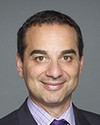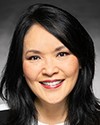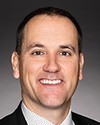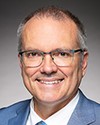moved that the bill be read the third time and passed.
Mr. Speaker, it is a great honour to rise again as the House considers Bill S-232, an act respecting Canadian Jewish heritage month. It has been an absolute privilege not just to be the sponsor of the bill, but to be part of and witness to the debate and discussion surrounding the bill in both the other place and in the House.
I want to acknowledge Senator Linda Frum, who has partnered with me in introducing the bill, and the members for Thornhill and Esquimalt—Saanich—Sooke, who I have had the pleasure of working with to ensure strong multi-partisan support for the bill. I saw enthusiastic support as the bill was considered before the Standing Committee on Canadian Heritage, and I hope it will be mirrored by all members of this chamber as we debate Bill S-232.
I also want to take a moment to recognize the efforts of my friend and mentor the Hon. Irwin Cotler, who originally introduced the substance of the bill as a motion in 2015. I designate my work on this bill in his honour.
The bill came before the heritage committee soon after the committee heard from representatives of the Jewish community on the anti-Semitism that Jewish Canadians face. As we know, Jewish Canadians are consistently the most targeted group for hate crimes in Canada. Anti-Semitism, like all forms of discrimination, has no place in Canadian society. It is a testament to the long-standing advocacy of Jewish Canadians and Jewish civil society that we have come this far on this issue, but there is so much more to do.
While we know that anti-Semitism is a very real problem in Canadian society, we can all be proud of the distance we have come as a country. We no longer face the institutional, social, and political discrimination faced by so many Jewish Canadians over the course of Canadian history.
It is fitting that we have resumed debating the bill in 2018. This year marks the centenary of the end of the First World War, in which approximately 4,700 Canadian Jews from across Canada fought for their country, in spite of the discrimination they faced at home. Samuel Waskey from Winnipeg joined the 44th Battalion as a private and lost his life at the Somme. To avoid what has been referred to as an “unpleasant experience” because he was Jewish, he changed his name to Waskey from Warshawsky. Other Jewish soldiers took a more drastic step and registered as Protestants.
Saskatchewan Jews were among the first to volunteer during both World Wars I and II, and many lost their lives fighting in Europe. The province honoured those who sacrificed their lives, including a number of Jews, by naming lakes after them. Among these eternal memorials to our fallen are Faibish Bay, after Jack Faibish from Markinch, Saskatchewan; Levine Lake, after David Levine from Swift Current; and Glansberg Lake in honour of Maurice Glansberg.
During the Second World War, over a third of all Jewish Canadian men over 21 served in the Canadian Expeditionary Force. This was in spite of the discrimination and the many hurdles they faced. The year 2018 also marks the 70th anniversary of the end of Canada's notorious “none is too many” policy. From 1933 to 1948, under this policy, only 5,000 Holocaust refugees were admitted to Canada, the fewest of any western country. The most egregious example of this misguided policy was in 1939, when Canada turned away the MS St .Louis. Of the more than 900 Jewish refugees on board seeking sanctuary here in Canada and forced to return to Europe, 254 died in the Holocaust. We cannot turn away from this ugly truth and Canada's part in it. However, in 1949, Canada admitted 11,000 Jews, more than any other country except Israel.
As Canadians, we must remember the lessons taught by this awful period. The stories of Holocaust survivors who came to Canada are our stories as Canadians. I am proud that my riding of York Centre became home to so many Holocaust survivors who emerged from the ashes of Europe to begin new and vibrant lives here in Canada. They helped inform and build the modern Canada that we are all so proud to represent.
I want to highlight the success of the March of the Living, a two-week educational experience that takes hundreds of Canadian students each year to Poland and Israel. On Yom HaShoah, to mark Holocaust Remembrance Day, these students undertake a three kilometre march from Auschwitz to Birkenau accompanied by a group of indomitable Holocaust survivors who serve as their guides.
This May is March of the Living's 30th anniversary. Over 12,000 high school students have taken part in this incredible project. I want to recognize the exceptional work of Rabbi Eli Rubenstein for his leadership on this initiative.
March of the Living illustrates the importance of Holocaust education as an essential part of our Canadian Jewish heritage. Projects like March of the Living connect our past to our future, with older generations educating our future leaders. The march has 12 goals, among them to never allow the unchecked rise of the menace of antisemitism; to never again allow any kind of discrimination directed by any individual or any group against any other to gain strength; and to inspire participants to commit to building a world of freedom, democracy, and justice, free of oppression and intolerance.
March of the Living has benefited enormously from the selfless work of over 100 Holocaust survivors, survivors like Max Eisen, Anita Ekstein, Esther Fairbloom, Bill Glied, and Pinchas Gutter, to name but a few. They give their time and energy, but most importantly, they open themselves up to reliving their immense pain and suffering so that future generations can learn from their experiences.
There is no replacement for the first-hand stories of Holocaust survivors. As their numbers dwindle, it is even more important that we hear and document these stories.
Nate Leipciger is one of the hundreds of survivors of Auschwitz who came to Canada, but he has returned to Poland 17 times with the March of the Living. I have personally had the privilege of listening to and learning from Nate, from his experiences during and after the Holocaust.
One of his most inspirational stories is from a year and a half ago. Seventy three years after having survived the lowest point of his life at Auschwitz, Nate returned there with the Prime Minister. He described his return to Auschwitz with the Prime Minister as triumphant. As Nate wrote, “When the Prime Minister and I shed tears together in Auschwitz-Birkenau, never have I been more grateful for the welcome given to me by my adopted land, never have I been prouder to be a citizen of our beloved country, Canada. It was one of the most uplifting moments of my life.”
The Prime Minister's experience is not unique. It has been shared by thousands of Canadians from all walks of life.
Jewish Canadians hail from all corners of the world: South Africa, Russia, Israel, Morocco, India, Iraq, Argentina, and many other countries. Their histories and experiences shape the Canadian Jewish identity and add to the very fabric of our nation.
I am a proud Canadian, and I am also a very proud Scottish Jew. Nothing gives me more pleasure than sharing my own heritage, like wearing the Jewish tartan, as I am today, or donning my kilt, as I did at our annual Robbie Burns supper on the Hill just a couple of weeks ago.
In many ways, the diversity of Jewish Canadians mirrors the diversity of our broader Canadian society, each of us bringing our own customs and our own traditions. These stories have played out in communities big and small across Canada. I am certain that every member of this House from every province and territory can point to the history of Jewish Canadians in their own communities.
While the largest Canadian Jewish communities are in Montreal and Toronto, the purpose of this bill is to recognize the role and highlight the stories of Jewish Canadians from coast to coast to coast, from St. John's to Victoria to Iqaluit and everywhere in between.
During the debate on Bill S-232, I have learned of the histories of Jewish communities in Cape Breton, Niagara Falls, and Hirsch, Saskatchewan. Each community has a rich history and a story to share, like Congregation Emanu-El in Victoria, Canada's oldest synagogue, in continuous operation since 1863, or the Jewish community of St. John's, which is one of the oldest in Canada, having arrived in Newfoundland in the 1770s. Even the very small Jewish community in Iqaluit, numbering just 20 people, adds to the fabric of our Canadian Jewish heritage.
The enactment of Canadian Jewish heritage month will ensure that the historic and ongoing contributions of Jewish Canadians are recognized, shared, and celebrated across this great country for generations to come. By choosing May as Canadian Jewish heritage month, we will see what currently exists in the United States and Ontario expanded to a national celebration across our great country.
As I close, I want to thank my colleagues for the support they have offered so far and encourage all of them to see this bill passed into law.













